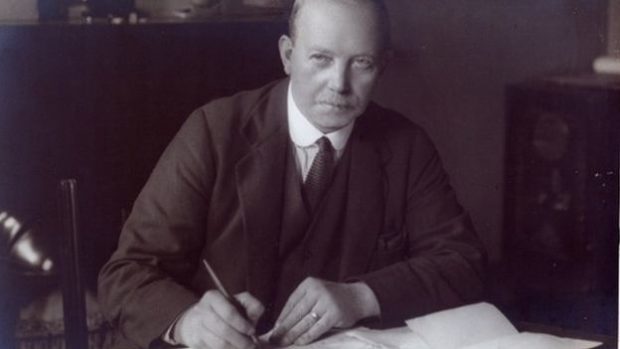A Dons fan who has spent six years researching Pittodrie has discovered it was designed by legendary architect Archibald Leitch.
Sue Shepherd, a city businesswoman and long-time Dons aficionado, has spent the last six years following up her discovery of a layout plan of Pittodrie Park in 2013.
It has now emerged the stadium, which was built in the 1920s, was the work of Mr Leitch, who also designed Hampden Park, Old Trafford, Cardiff Arms Park, Anfield, Ibrox and Lansdowne Road.
Her findings have been confirmed by the club’s football heritage trust, who are impressed by the quality of her research.
Chris Gavin, from the trust, said: “The AFC Heritage Trust has worked with Sue to find out more about the contribution of the architect, Archibald Leitch,and an approach to the city archives brought to light some of the plans that were drawn up for the club.
“From there, Sue has done some excellent work in finding out more about the stand and how it was constructed. She then tied it in with information from the trust to produce her new blog on the subject.
“Building work in the classic Leitch style began in 1921 and the seating was available for use at the start of season 1921-1922.
“The internal finishing, because of finances, took until 1928.”
The majority of Aberdeen FC’s records were lost in a fire in 1971, which has made it difficult for historians to analyse the development of Pittodrie from the planning stage to becoming a fully-realised arena.
However, Ms Shepherd refused to be deterred from pursuing her objective after becoming convinced Mr Leitch had been involved in creating the Dons’ home.
She told the Press and Journal: “As a young child in the early 1970s, my Dons-daft father would place us on the concrete barrier posts in the south stand at Pittodrie and left us there with friends for the duration of the match, while he reported for duty as a policeman at the main stand.
“I’ve been fascinated by the club and its history ever since. And, in August 2013, I found myself in an old dusty archive at old Aberdeen and not expecting to find very much.
“I couldn’t quite believe my eyes as they focused on several rolled-up scrolls wrapped with ribbon in front of me. When I opened them, it was quite simply a eureka moment.
“Here in my hands were the original architectural plans of Pittodrie Stadium dated 1921-1922. They had survived.
“There were 17 fairly large and beautifully detailed plans that had not seen the light of day since 1921 and I was perhaps the first person to see them since they were deposited there.
“But crucially, every single plan had the name of Archibald Leitch and his company along the bottom. It was an exciting moment and an important but very lucky find.”
Ms Shepherd was congratulated by North East MSP Lewis Macdonald who said she had “done a marvellous job, doggedly following up leads” to prove Mr Leitch had a hand in designing Pittodrie.
And he has tabled a motion in the Scottish Parliament commending her detective work.
Mr Gavin added that the club intends to highlight Mr Leitch’s designs when it relocates to Kingsford.
He said: “When the club moves to its new stadium in the near future, the heritage trust and the club are aiming to take a good deal of Pittodrie with them to the new site.
“This will include some key elements of Archie’s designs so that people will be able to see them and reminisce over their favourite stories of a classic football ground.”
You can read the full blog at:










